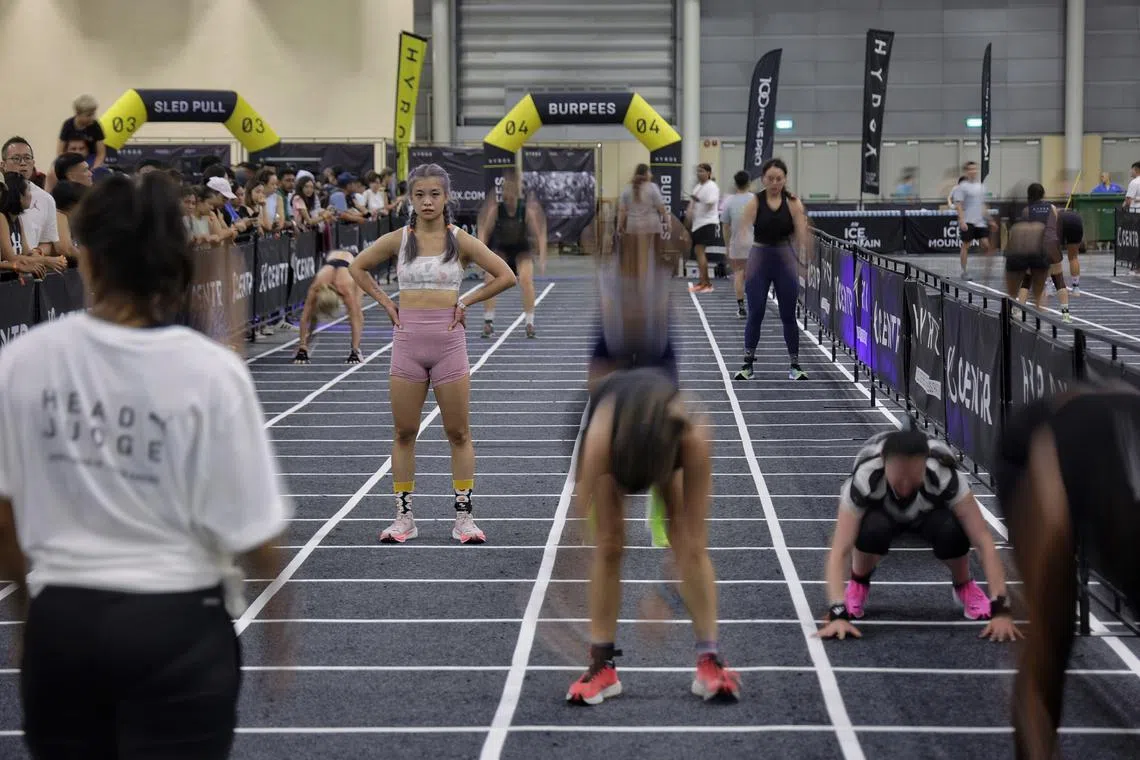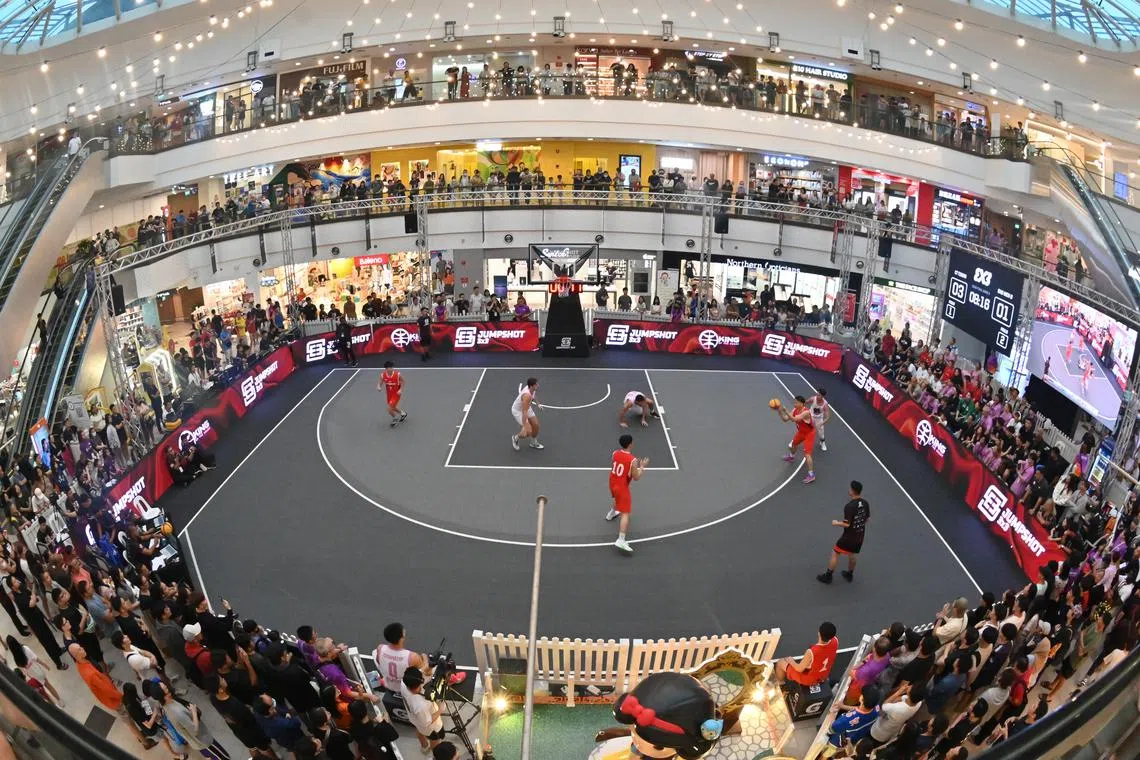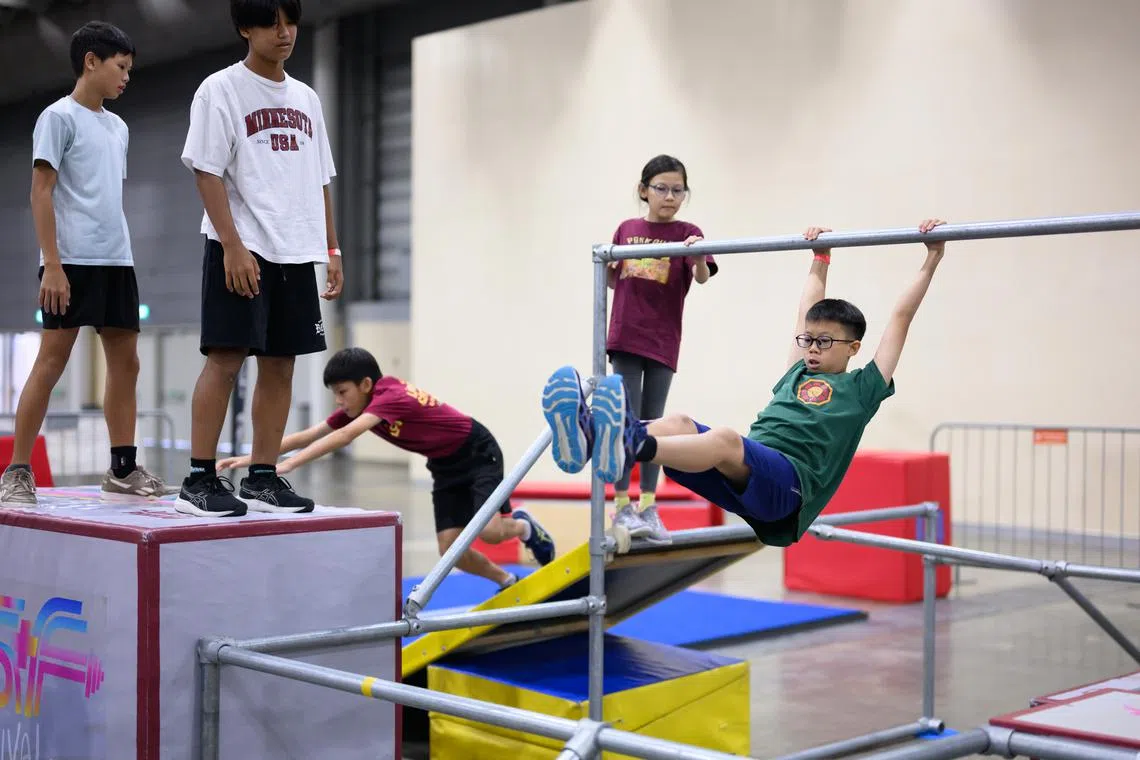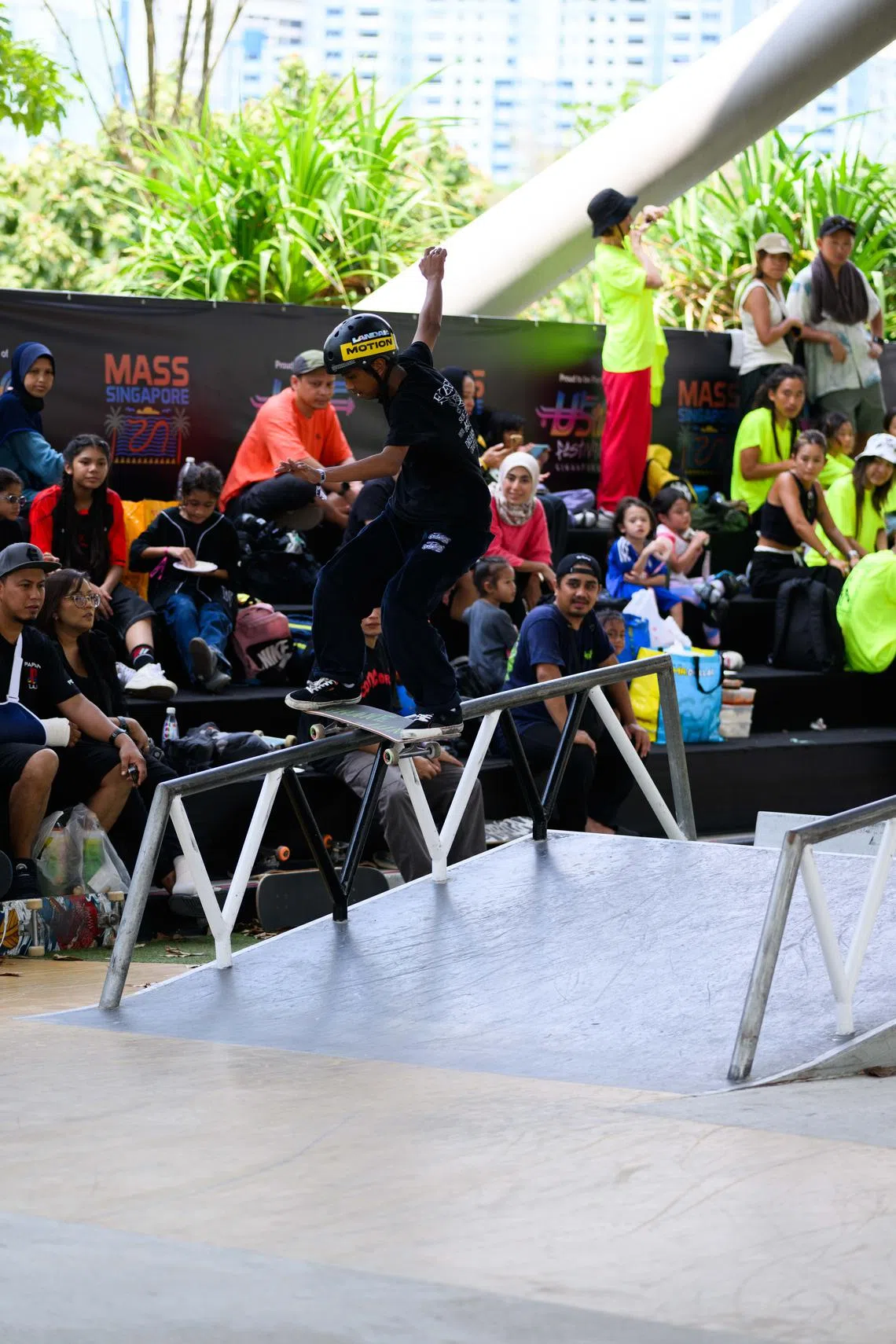Interest in urban sports is growing everywhere. Can Singapore keep up?
Sign up now: Get ST's newsletters delivered to your inbox

Thirty dancers, including Phoebe Lim (back row, both hands on her head), underwent training for a performance at the Singapore Expo as part of the Singapore Urban Sports & Fitness Festival on Sept 1.
PHOTO: SPORTSG
Follow topic:
SINGAPORE - Void decks, car parks and an open space near the Singapore Indoor Stadium are Phoebe Lim’s go-to spots to practise dancing.
But on Sept 1, the 21-year-old Singapore Institute of Management undergraduate brought her moves to a decidedly bigger stage – the Singapore Expo.
Lim was one of 30 dancers selected to perform at the DanceXhibit event at Expo Hall 5, held as a part of the inaugural Singapore Urban Sports & Fitness Festival.
“The atmosphere was crazy,” she said, “and the energy was through the roof.”
About 450 people watched the showcase, said Lim, which was one of 22 included in the line-up of festival activities that involved sports such as parkour, BMX and callisthenics.
The festival, held from Aug 23 to Sept 1 across multiple venues, saw a turnout of more than 70,000 participants and spectators, said Roy Teo, chief of industry development at national agency Sport Singapore’s (SportSG) technology and innovation group.
The appetite for urban sports has been increasing over the years, said Minister for Culture, Community and Youth Edwin Tong in a Facebook post at the start of the festival.
Ensuring that such activities are accessible and enjoyable for the public, and making them an integral part of the sporting culture is SportSG’s goal, said Teo, who noted an increase of urban sports events in the community.
Event organisers and sporting academies have also seen a growth in interest.
Faiz Saifulrohman, president of Parkour Singapore, said at least 50 parkour classes are conducted across different academies on a weekly basis.
The sport, which involves overcoming obstacles in natural and man-made environments, is also a co-curricular activity in many international schools, he added.
For three-on-three basketball, Esther Quek, chief executive of media and event organiser Jumpshot Singapore, said participation rates for these tournaments have trebled from 2021.
The Sept 7-8 Wee Nam Kee 3x3 Cup at Kebun Baru Community Club saw more than 80 teams involved.
Global fitness competition Hyrox has also made its mark here, with Singapore expected to host two editions of the fitness race in 2025, said country manager William Petty.
A two-day event on Aug 31 and Sept 1 drew more than 6,000 participants,
Such unconventional sports events were sparse 10 to 20 years ago, said national skateboarder Farris Rahman, 30, who noted “there is more effort put in to grow and cultivate the urban sports scene now”.

A two-day Hyrox event from Aug 31 to Sept 1 attracted more than 6,000 participants.
ST PHOTO: KEVIN LIM
But, even as interest continues to pick up here and globally, more needs to be done to develop the urban sports scene, said athletes and national sports associations (NSAs).
The Singapore DanceSport Federation (SGDF) has seen an increase in the number of breakers, said communications manager Isabelle Tay, and it has also been sending more athletes to participate in international competitions that are crucial for Olympic qualification.
The association plans to form an interest group to foster talent and provide more opportunities for athletes to gain international exposure.
The latter will require funding, said Tay, which is “one of the key challenges” it faces.
It also plans to explore avenues for funding, while strengthening ties with the sporting and street dance communities to improve support for breakers and grow the sport.
Performances on bigger stages will raise awareness and, hopefully, result in NSAs being able to make a case for more government funding for the sport, said practitioners.
The inclusion of DanceXhibit in the festival was a “stepping stone to push dance to gain more exposure to the general public”, said Lim.
“It’s a great opportunity to show and inspire both dancers and non-dancers what dance is about – community, music and energy,” she added.
More eyeballs also help athletes by earning them bigger social media followings and sponsorship opportunities, said cyclist Brendan Tan, 24, who has been on the BMX scene since 2013.
Perfect for urban sports
Amid the chatter of families, rhythmic thuds of a ball hitting the ground resounded through Bukit Panjang Plaza on a weekend in January.
As shoppers stopped every now and then to sneak a curious glance, 22 3x3 basketball teams competed on the first level, which was transformed into a half-court by Jumpshot Singapore.
“In Singapore, courts for hosting a 5x5 tournament aren’t easy to book for longer periods,” said Quek, adding that 3x3 tournaments, where games last 10 minutes, can finish within a day or two.
Urban sports, which commonly use existing space and infrastructure, take up a lot less space than traditional ones such as athletics or swimming, which require a venue and a controlled environment, said Dr Shaun Teo, an assistant professor of geography at the National University of Singapore.
For example, Singapore is a big parkour hot spot and attracts practitioners from all over the world due to its dense architecture, said Faiz.
“The architecture is perfect. Everything is so close together – the walls, the ledges – and the areas are all public,” he added. “These areas are also often located near MRT stations, making them highly accessible.”
For functional fitness fans, the sheer number of gyms available in the city makes it easy for Hyrox participants to train for the race, said Petty.
“Hyrox is always held within an indoor environment,” he added. “We have an Expo here, and also the National Stadium which has a really nice view of the Marina Bay Sands. It’s perfect.”
Being held at venues such as malls also attracts more audiences due to a venue’s accessibility and natural traffic.

Twenty-two teams participated three-on-three basketball tournament was held at the Bukit Panjang Plaza over a weekend in January.
PHOTO: JUMPSHOT
Dilution of culture?
In recent years, urban sports have been making waves on sport’s biggest stage, the Olympic Games. BMX freestyle featured in Beijing in 2008, 3x3 basketball and skateboarding debuted at Tokyo 2020, and breaking was on display in Paris in August.
Parkour, which has its roots in France, was considered for the most recent edition of the Olympics, with the International Gymnastics Federation attempting to include it as an event. But the International Olympic Committee ultimately decided against it.
But, as urban sports enter the mainstream and some welcome new-found visibility and legitimacy, others worry that this may also result in a dilution of what makes such activities unique: their spontaneous and free-flowing nature.
For instance, parkour involves expressing oneself through an environment – features which may be both natural and man-made, sometimes on a route that is not pre-planned – using skills and movements such as climbing, vaulting, jumping and acrobatics, said Faiz.
“With competitions and events, the environment is controlled and there are more constraints and rules,” he added.
“If you score (parkour) based on a set of variables, it might limit creativity because people may only want to practise it the competition way.”
Faiz hopes parkour events will soon be able to be freely organised at public spaces and residential areas. That, he said, would be preferable to rigid, structured competitions, and “will help parkour keep its culture”.

The interest in parkour has been growing among younger audiences, said schools and event organisers.
PHOTO: SPORTSG
Some skateboarders also prefer less predictable environments, such as void decks or staircases, said Hass Aminian, owner of Millennial Events, an event organiser which specialises in urban sports such as skateboarding and BMX.
“They might not even like skating at skate parks, where everything is the same height,” he added. “Some handrails at HDB blocks are two feet high (about 60cm), some three feet. Some of them might even have a kink. That’s better for some skaters.”
According to skateboardsession.com, “the roots of skateboarding culture are deeply intertwined with punk rock, and this connection has shaped much of its rebellious attitude”.

Skateboarders from all over South-east Asia competed in Mass Singapore, a skateboarding competition held at Jurong Lake Gardens from Aug 31 to Sept 1.
PHOTO: KENJI HARUTA
Farris welcomes the spotlight on urban sport, saying it helps to improve their public image.
Farris, who represented Singapore in the Olympic qualfiers, said: “When I was growing up, skateboarding was seen as something that was rough and less than ideal...
“Now, it’s seen as a productive sport that people enjoy to de-stress.”
He added: “These days, I see more families taking it up. Even parents are open to trying it out and eventually realising it’s pretty fun.”
Farris is comforted that Singapore’s skateboarding scene will stay alive, which also gives him encouragement to go on and achieve a milestone of his own.
“I won’t rest easy too fast because I still want to try for 2028 (Los Angeles Olympics), but I’m happy to see that there is talent and potential.”


